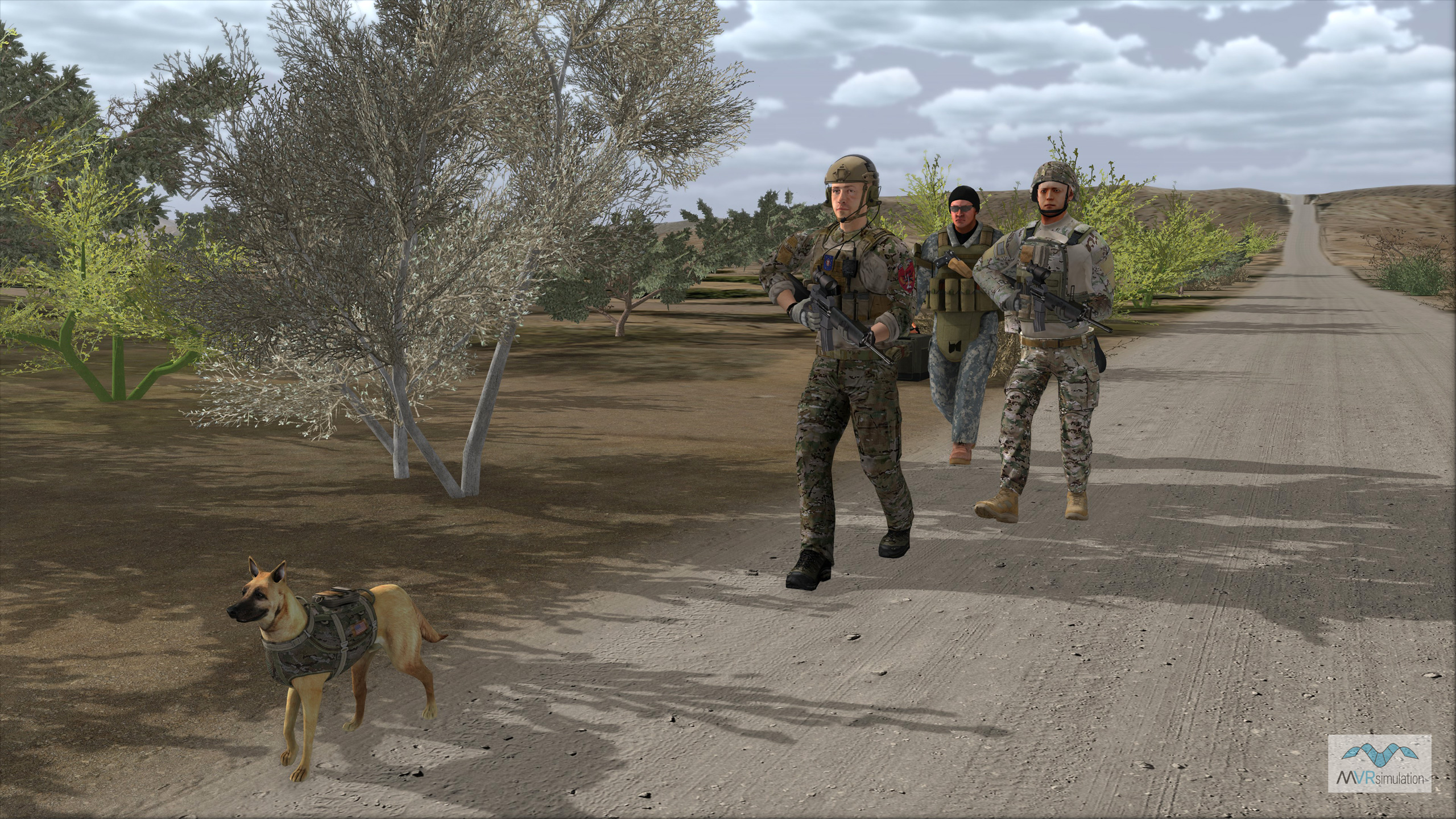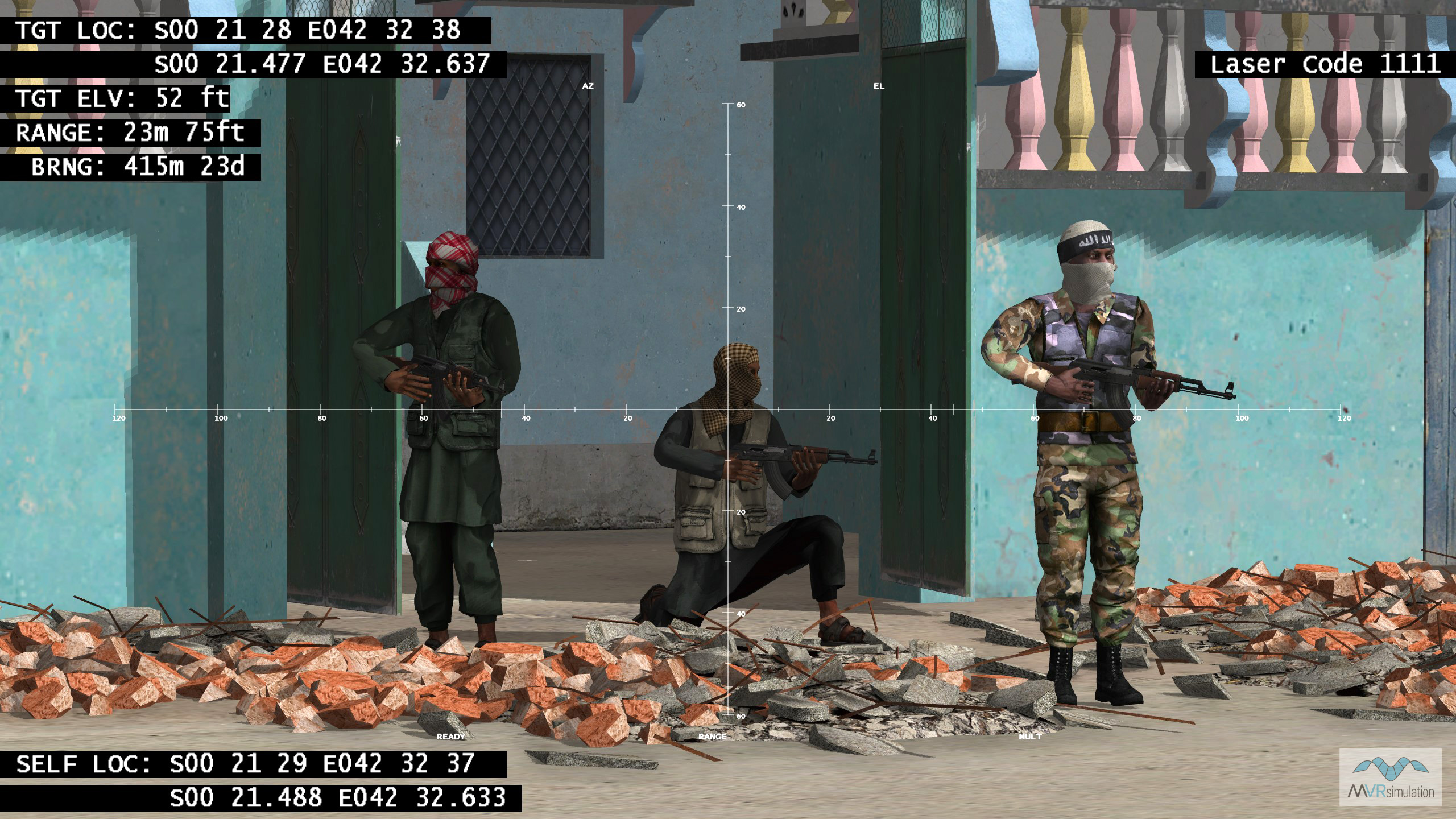First Person Simulator (FPS)

MVRsimulation VRSG real-time scene of a JTAC team on the geospecific 2 cm per pixel resolution 3D terrain of the U.S. Army Yuma Proving Ground.
To simulate interaction among human characters in a networked MVRsimulation VRSG session, you can use VRSG First Person Simulator (FPS) to control your character and view the scene from the character’s point of view.
FPS creates a simulation of a dismounted infantry character within VRSG; for example it provides a way to simulate the individual for mission training set within urban terrain or mountainous villages or littoral settings.
By manipulating a gamepad you can control your first-person character portrayal and actions such as standing, walking forward or backward, kneeling, walking crouched, crawling, firing a weapon, and lying prone. In addition to controlling the character’s movements, the gamepad accesses various functions such as firing weapons, or laser ranging and target designating in JTAC/CAS mode.

MVRsimulation VRSG real-time scene in FPS laser designation mode of the high-resolution Kismayo, Somalia, virtual terrain.
Current FPS features include:
- Multiple firing modes for an individual weapon, with enhanced sighting devices: single-shot, semi-automatic, fully automatic, thermal, flashlight, and so on
- Complete soldier animation, which includes character animations of lying in a prone position, crawling, kneeling, standing, walking, running, and falling after being shot which match appearance bits in the DIS Entity State PDU
- Gamepad-controlled walking and running speeds
- Sound effects, such as walking, weapons fire, and battlefield background sounds
- Collision detection, for example when a soldier collides with building walls, and cannot walk through buildings
- Support for forward area controller (FAC)-type actions in JTAC Close Air Support simulations between aircraft and ground systems
- Reticle cross hairs and laser pointer toggle on the gamepad
- Third-person mode, which is similar to the “tethered-fixed” stealth mode
- User definable guns
- Advanced sound effects, such as changing clips, out-of-ammunition, and the sound of a soldier being hit
- User-configurable data tables that map markings on the front and back of a soldier to participant names
- Unstick function to climb over obstacles as high as four feet, such as fences and guard rails
- Ammunition types and number of rounds-per-clip (user-definable)
- Damage assessment for modeling features such as body armor (user-definable)
- Re-incarnation period for demonstrations and training (user-definable)
Support for JTAC/FAC-type actions includes:
- Simulated laser designator view with user-definable magnification level
- Designating laser that issues Designator PDUs to support precision guided munitions (PGMs)
- User-definable set of selectable laser codes
- Ranging laser for target geolocating
